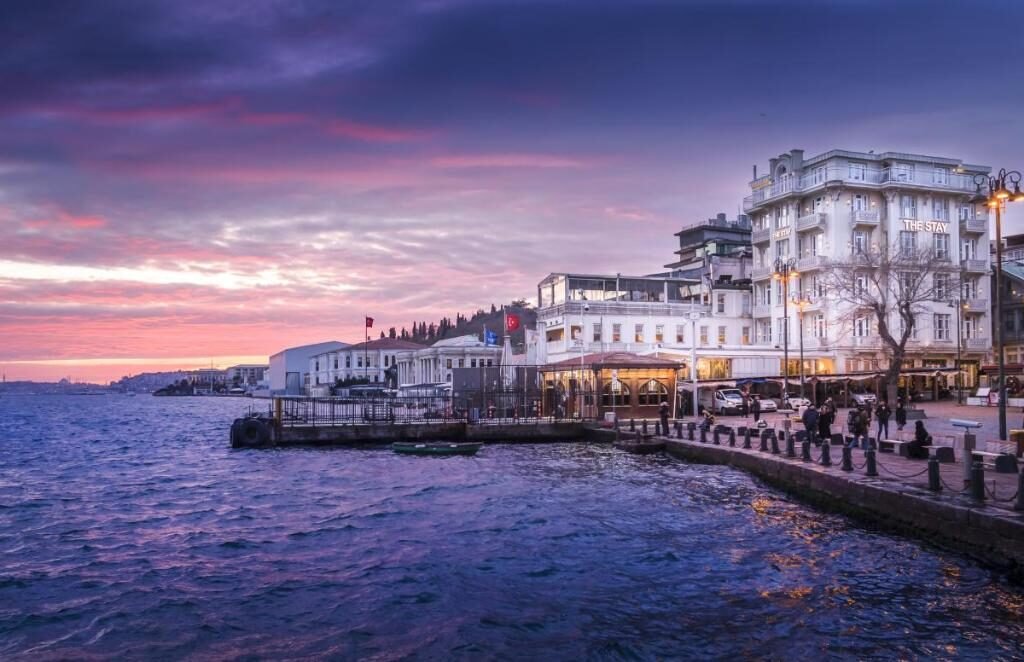The turquoise coast from Fethiye to Antalya is packed with ancient ruins, famous Lycian tombs, turquoise seas, and protective mountains.
Called the Turkish Riviera, tourists have flocked here for ten years, drawn by its perfect landscapes. The region offers ancient sites, clear waters, and stunning mountain views. The historical depth, with Lycian tombs and ruins, makes it fascinating for history lovers.
Relax on idyllic beaches, enjoy outdoor fun like hiking and sailing, or try adventure sports like paragliding and diving. Taste delicious Turkish food, fresh seafood, and local dishes. Feel the welcoming Turkish culture and hospitality. Drive along the coast to take in breathtaking views.
Dive into the beauty and rich culture of Türkiye’s most beautiful coastal region and discover the best places the Turkish Riviera has to offer.
Table of Contents
The Lycian Way: An Epic Hike on the Turkish Coast

The Lycian Way, a 500 km trail opened by English explorer Kate Clow in 1999, runs along the coast between Fethiye and Antalya, traversing the Teke peninsula (ancient Lycia). The path is lined with pines and cedars and marked by ancient Lycian ruins, along with red and white trail markers. One suggested route connects Olüdeniz and the abandoned village of Kayaköy. After exploring the ghostly ruins of 400 houses and two 17th-century churches, take the challenging path that climbs behind the village. The 8 km hike (about two hours) offers spectacular views of the coastal scenery. More adventurous hikers can tackle the full 509 km of the Lycian Way in about five weeks.
For easy access between key points, take the minibus from Olüdeniz (lower town) to Hisaronu (upper town), then from Hisaronu to Kayaköy.
Ancient Cities and Sites on the Turkish Riviera
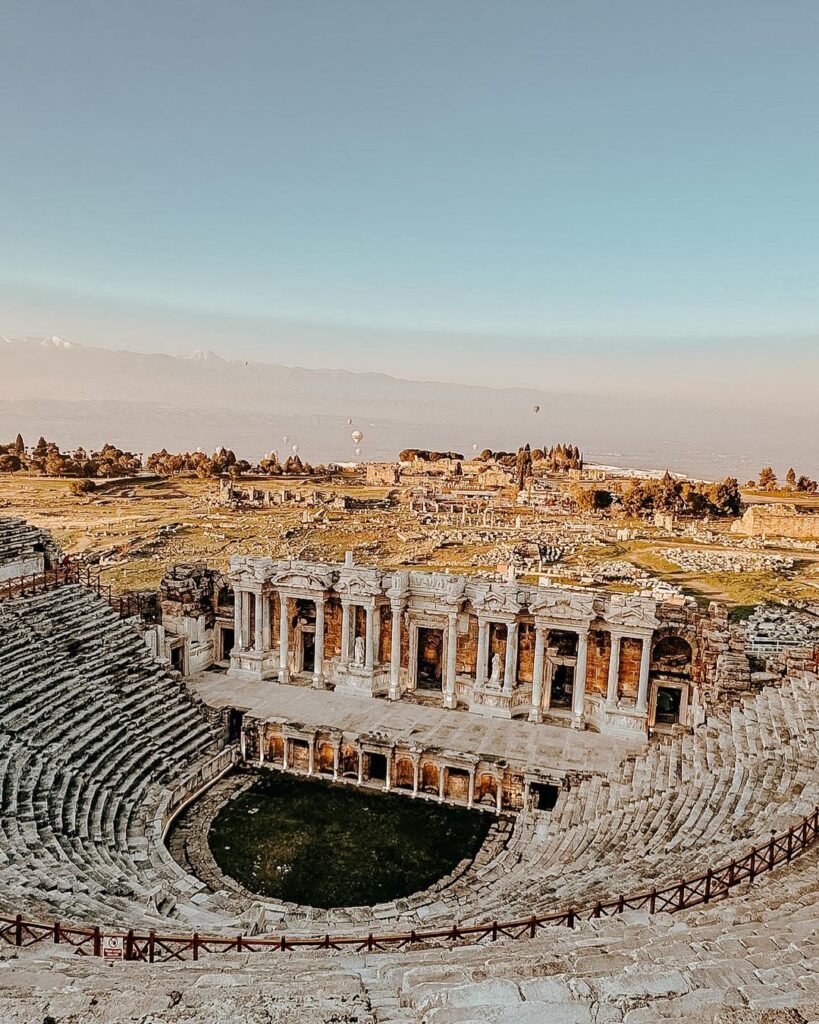
Turkey’s Mediterranean coast is dotted with ancient cities and historic sites. One highlight is Termessos, an ancient city in the mountains 34 km northwest of Antalya, featuring a well-preserved theater and necropolis, all over 1,000 meters above sea level. Termessos was founded by the Pisidians, not the Lycians or Greeks.
Two UNESCO World Heritage Sites of note are Letoon and Xanthos. Letoon, dedicated to the goddess Leto, features well-preserved temples and a theater. Xanthos, once the capital of Lycia, boasts a Hellenistic theater and remnants of an acropolis and agora.
Other worthy sites include:
- Kaunos near Dalyan: An ancient Carian port with troglodyte necropolises.
- Tlos, 35 km east of Fethiye: Known for its acropolis and tomb sculptures of Bellerophon.
- Arykanda: A Lycian city spread over five terraces with a stadium, agora, necropolises, odeon, cistern, theater, and baths.
- Aspendos: Famous for its theater and aqueduct.
- Perge: The central city of ancient Pamphylia.
Best Beaches on Turkey’s Mediterranean Coast
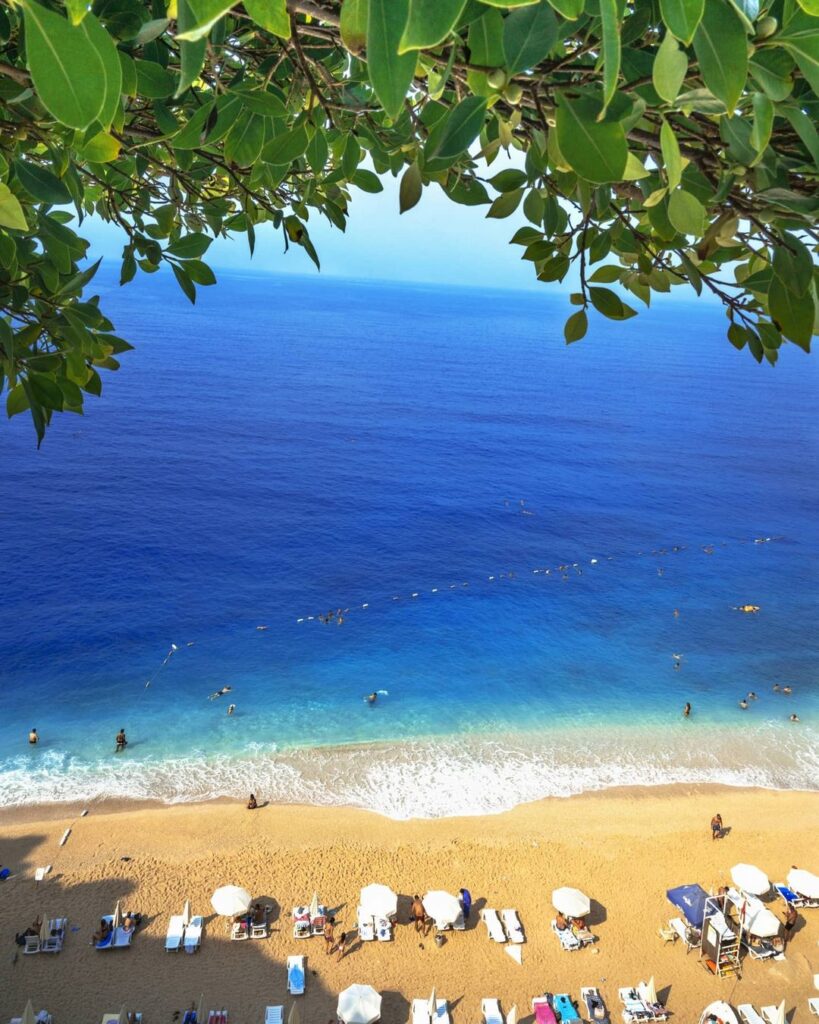
Between Fethiye and Antalya, you will find wild beaches and secluded bays, often accessible only by two-wheelers. The stretch between Kaş and Finike is especially rich in these hidden gems.
Kaputas Beach, located between Kaş and Kalkan, is perhaps the most famous. Known for its azure waters, a steep climb and 180 steps reach it. Parking is limited; two-wheelers are recommended.
Other coastal treasures include:
- Akçagerme
- Küçük çakıl (Kaş)
- Büyükçakıl, 1.5 km southeast of Kaş
- Çıralı
- Adrasan (Adrasan Sahil) between Finike and Çıralı
These beaches, set against rocky backdrops, offer stunning natural beauty and relaxing spots.
Kaş, Üçağız, and Other Picturesque Villages of Lycia

While often cemented over due to its popularity, the Turquoise Coast still maintains pockets of its charming, less-commercialized past.
Kaş, protected by its mountain, was only accessible by sea until the 1950s. This town offers a lazy port and a handful of whitewashed houses. Expect a calf workout as many hotels and guesthouses require a climb up a steep hill, but the bay views are well worth the effort. The Antiphellos Theater, though filled with car noise, is still quite preserved.
Kalkan, west of Kaş, shares a similar hillside setup and stunning bay views but has a more vibrant atmosphere. Some may prefer this liveliness, while others might lean towards the relative calm of Kaş.
Üçağız, across from Kekova Island, boasts a serene blue horizon with islets, rugged cliffs, and minimal grand architecture, making it an ideal base for exploring Kekova or Kaleköy.
Çıralı, on the other hand, is more a series of luxury hotels along a 4 km beach, a nesting ground for sea turtles. Despite the tourist influx, it maintains a more tranquil atmosphere. Don’t miss the Chimaera, the natural flames emerging from the rocks, which is best seen at nightfall.
Ölüdeniz and the Turkish Blue Lagoon

Ölüdeniz, nestled on the south face of Babadağ Mountain, features a white sand lagoon with blue waters and a surrounding pine forest, making it a postcard-perfect spot. But in summer, expect crowds, paragliders with selfie sticks, and a vibrant nightlife with karaoke and pool parties. For a more serene experience, visit off-season and explore areas away from the main beaches.
The Valley of the Butterflies: A Coastal Haven
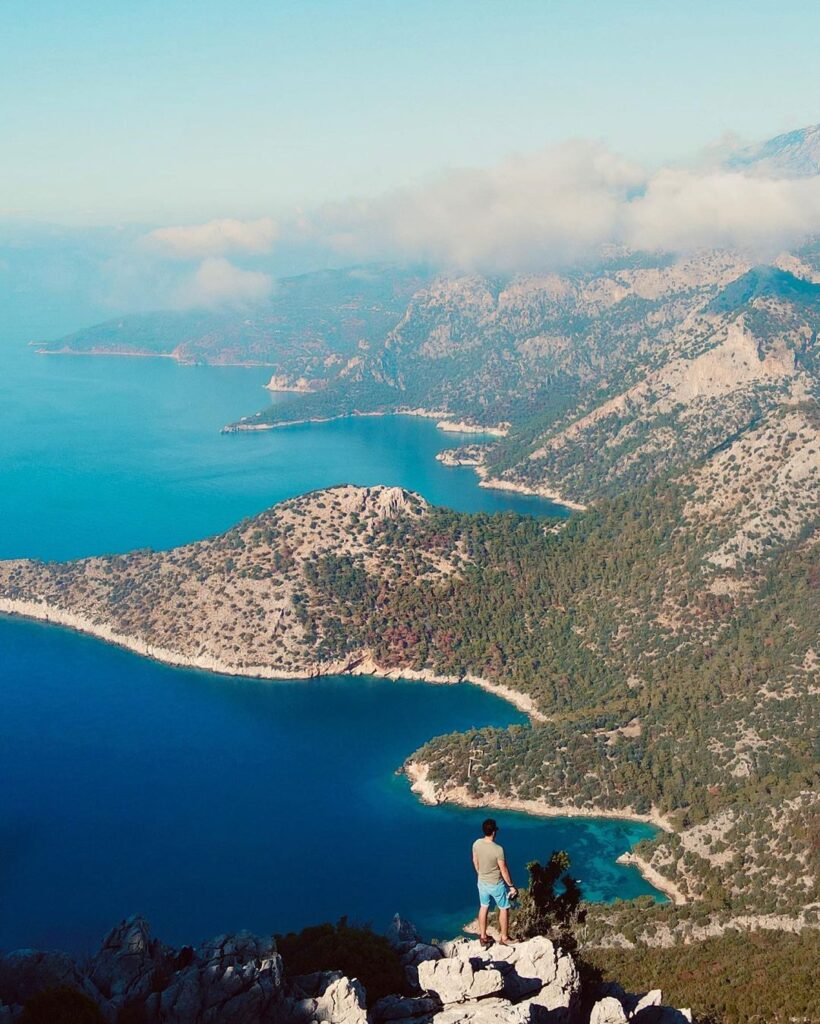
Just a 30-minute boat ride from Ölüdeniz, the Valley of the Butterflies beneath the village of Faralya offers a peaceful retreat on the coast of Yedi Burun (“seven capes”). While pirate-themed boats may visit briefly, the area remains tranquil for the most part.
Once you reach the beach, head to the hiking trail beyond the flower power camp. Here, you might spot the rare mottled tortoiseshell butterfly, the region’s prized resident. After a 30-minute walk and some mild rock climbing (leave the flip-flops), you’ll find a gentle natural waterfall within the gorge, perfect for washing away your exertions. Finish your day by enjoying the serene beach surroundings, reminiscent of a scene from “Lost” but without the existential dread.
Patara: Between Archaeological Wonders and Stunning Beaches
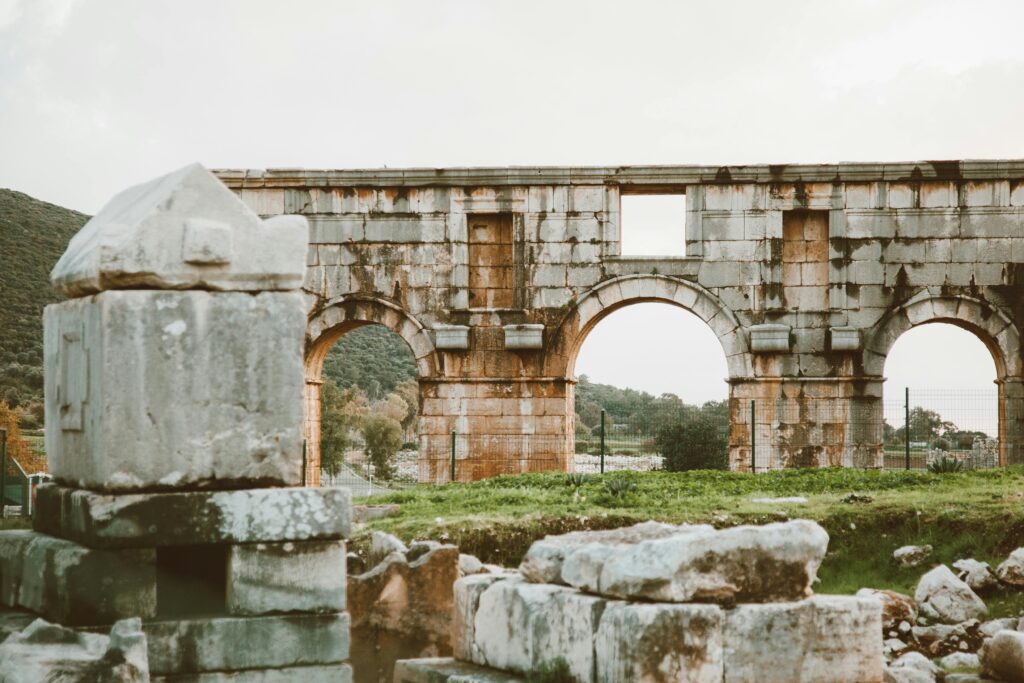
Patara, located 8 km south of Xanthos, was once the region’s main port and even became the Roman capital of Lycia and Pamphylia. Founded by Pataros, one of Apollo’s sons, the city boasts significant ancient remains, including a 5,000-seat theater, Lycian sarcophagi, a colonnaded street, and a lighthouse from 60 BC, though only its base and a few stones remain.
A half-hour walk from the village leads to an 18 km stretch of fine sand (Turkey’s longest beach), untouched by concrete developments. Patara Beach is a nesting site for Caretta caretta sea turtles, and from May to August, it closes at 8 p.m. to protect their eggs.
Kekova and Kaleköy: Beauty Amidst Ruins

Kekova and its surrounding seabeds are home to sunken cities, shipwrecks, and vibrant marine life. Exploring by caïque (gület) is essential for a complete turquoise coast experience. Many tours depart from Kaş, generally heading for Kekova Island to view the ruins of ancient Simena (Batık Şehir).
Snorkeling stops are common, and boats often anchor at Kaleköy, allowing visitors to climb the fortress for a panoramic view or paddle around the half-submerged Lycian tomb. Try the artisanal ice creams in Kaleköy! Day trips cost around 150 TL, including lunch.
- Larsoy Travel & Tourism Office: Liman Sk. 4 B, Kaş/Antalya
- Captain Ergun’s Boat Trips: Liman Sk. 4/A, Kaş/Antalya
Demre: Ancient Myra
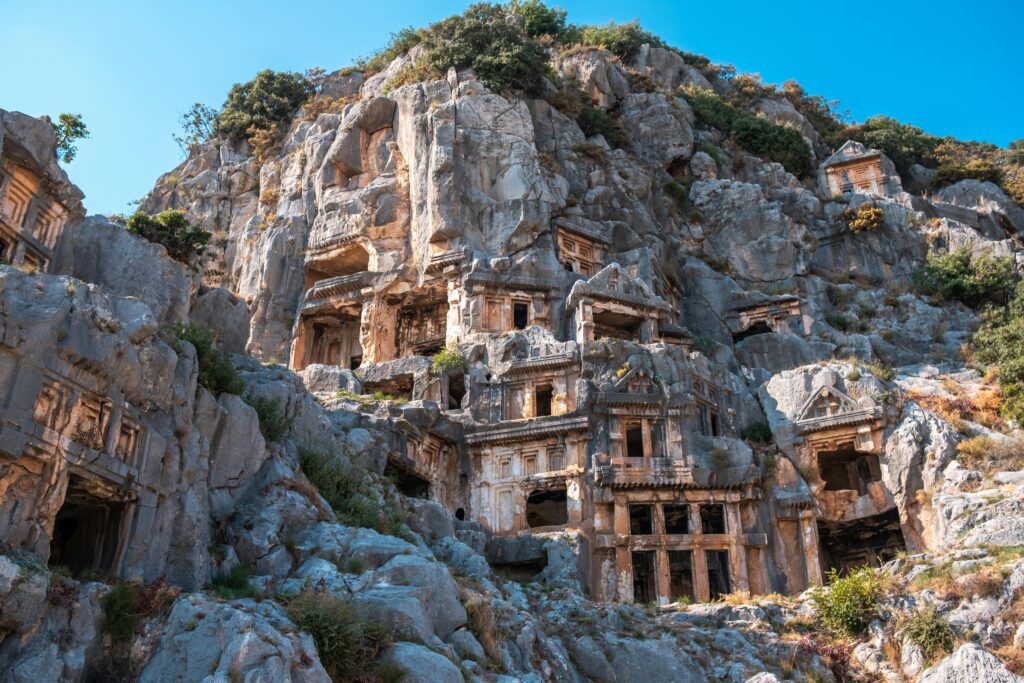
Demre, also known as Myra, 45 km east of Kaş, features stone facades in its necropolis imitating wooden houses. Dating back to the 4th century BC, the tombs reflect the occupant’s social status—the larger and more intricate, the more important the person. The site includes a well-preserved theater and rock tombs.
While there, visit St. Nicholas Church (36 TL), where the 4th-century archbishop lived. It’s popular with Russian tourists for its frescoes and icon-filled shops.
Antalya: Capital of the Turkish Riviera
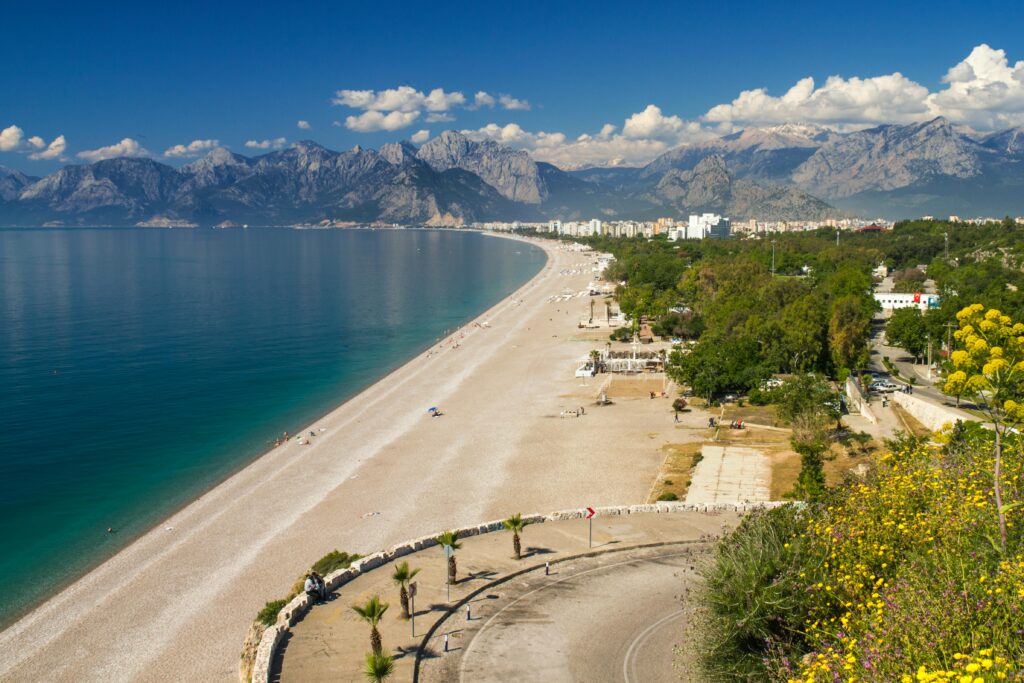
Arriving in Antalya by road can be overwhelming due to heavy traffic. However, the city’s landscapes, including the Düden Şelalesi waterfalls and the Taurus mountain range near the old port, quickly charm visitors. Exploring the old city, Kaleiçi, reveals treasures like the fluted minaret (Yivli Minare), Roman ramparts, Hadrian’s Gate (Üçkapılar), and the city’s 2nd century BC origins.
Antalya also offers enriching museums:
- Antalya Archaeological Museum: For ancient city history.
- Suna & İnan Kıraç Kaleiçi Museum: For Ottoman era lifestyle insights.
Nearby, Mermerli Beach in a secluded cove provides scenic views of cloud-capped Mount Taurus but can get crowded. More spacious beaches like Konyaaltı and Lara are accessible by car or tram.


